How to Choose a Snowboard Correctly
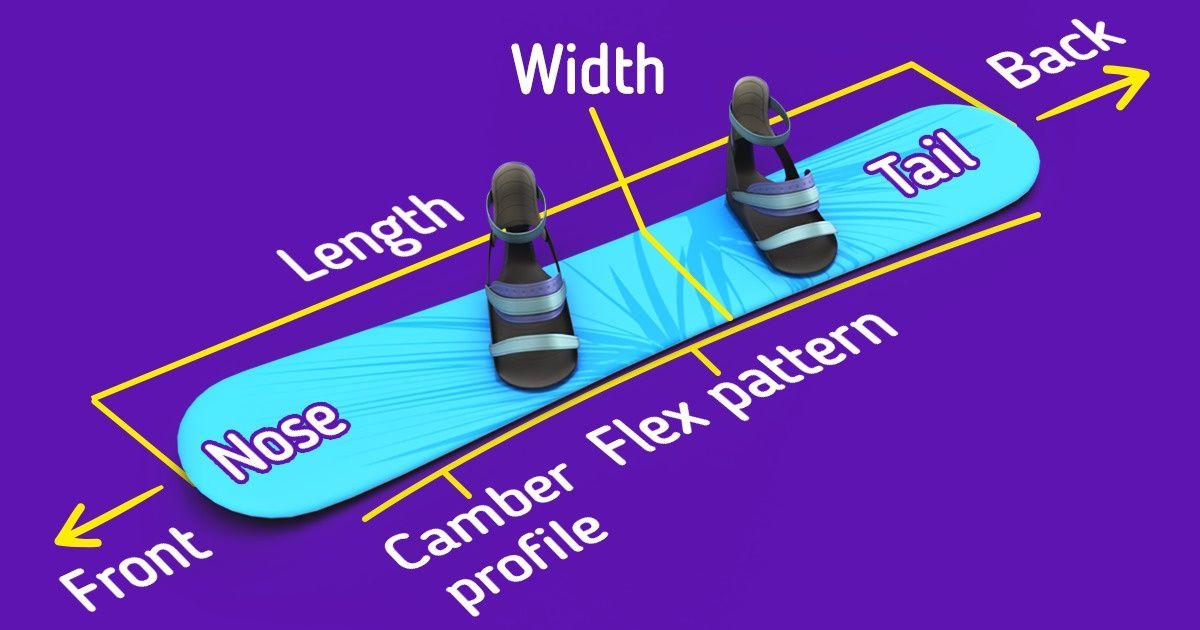
The correct choice of a snowboard affects whether you’ll like this activity or not. It doesn’t matter if you are buying your first snowboard or just adding another one to an existing collection — the right choice will help you get a reliable partner, thanks to which, you can take on any slope and make rapid progress in skiing. At the same time, the wrong snowboard can risk you spoiling your performance of going down a slope, even in the most beautiful and well-equipped places.
5-Minute Crafts is telling you how to choose a snowboard correctly.
What to pay attention to when choosing a snowboard
When choosing a snowboard, it’s necessary to pay attention to characteristics such as:
- Length
- Type
- Camber profile
- Width
- Stiffness
- Shape
A snowboard’s length
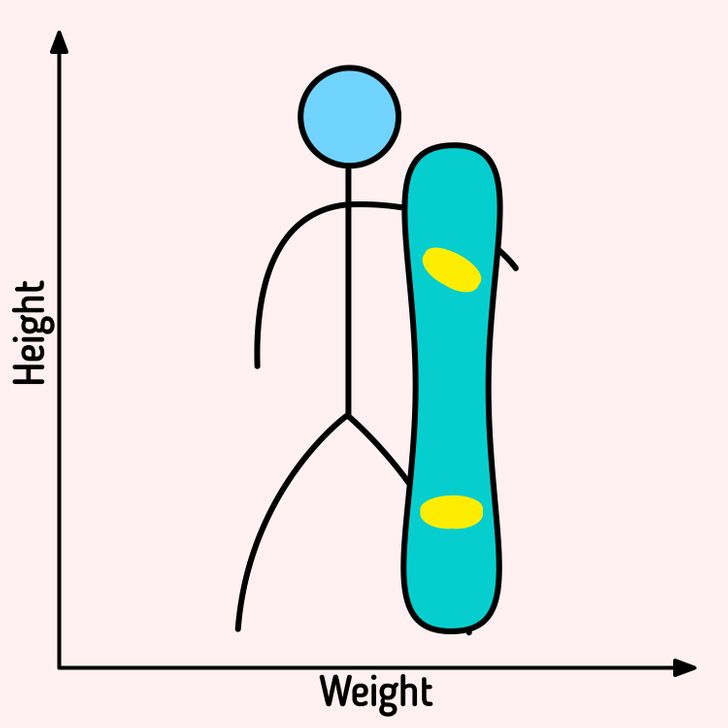
In order to find the right length of a snowboard, you should consider your height and weight.
Put the snowboard on its tail and compare it with your height. The right length of a snowboard is when its upper part (nose) is located between your chin and nose. This method has been used for quite a long time. But people of the same height can have a different weight, which is why the latter should also be considered when choosing a snowboard. Most manufacturers offer guides and recommendations on the ratio of snowboard length to the rider’s weight.
Also, it’s worth taking into account that a longer snowboard provides stability when descending at high speed and provides buoyancy in deep snow. At the same time, shorter boards normally have better maneuverability.
Snowboard types for different terrain
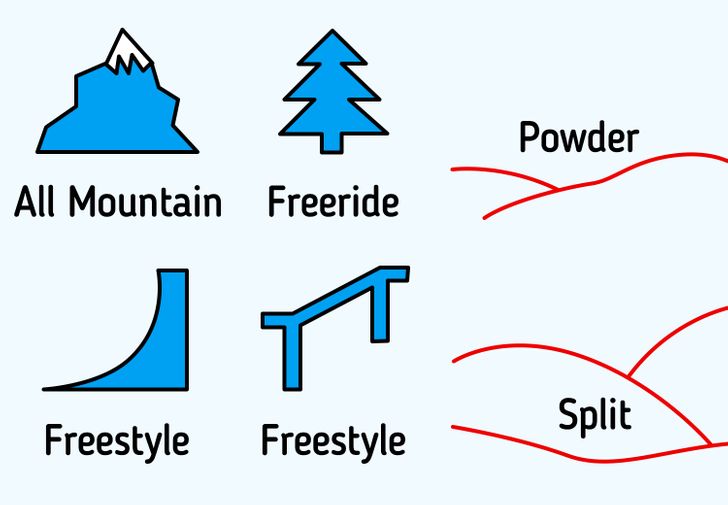
There are different types of snowboards depending on what conditions a rider is going to encounter when snowboarding:
- All mountain: This universal type is suitable for any terrain, whether those are special ski slopes, fresh snow in a forest, or a freestyle park. It’s suitable for any level of riding. It’s a very good option for beginners who haven’t decided what type and what style of snowboarding they are going to use yet.
- Freeride: This type of snowboard is used outside the equipped trails, like, for example, in the forest or in the mountains. Such snowboards are usually stiffer. They are designed for directional movement, with the nose of the board going down all the time. They are good for anyone who looks for stability at high speeds, deep snow, and steep terrain. As a rule, such boards are not suitable for hitting park jumps or rails. They are designed for above-intermediate riders, however, options for beginners are available too.
- Freestyle: This is a type of riding down slopes as the rider performs various tricks. Those who love freestyle usually have their rides in specially equipped parks that have rails, walls, trampolines, etc. The snowboard, in this case, is shorter, lighter, and symmetrical from both sides, which makes it easier to spin and make various maneuvers.
- Powder: As a rule, powder snowboards are designed especially for fresh deep-snow conditions, which creates a soft cover (powder). It has a wider nose and a narrower tail.
- Splitboard: This is a special 2-in-1 snowboard that is good for winter tracking activities. It can be split in half to create skis to be able to overcome sections of the snow-covered route. If the terrain is suitable, 2 halves can be joined back together and go down a slope as a snowboard.
Choosing a snowboard depending on age and gender
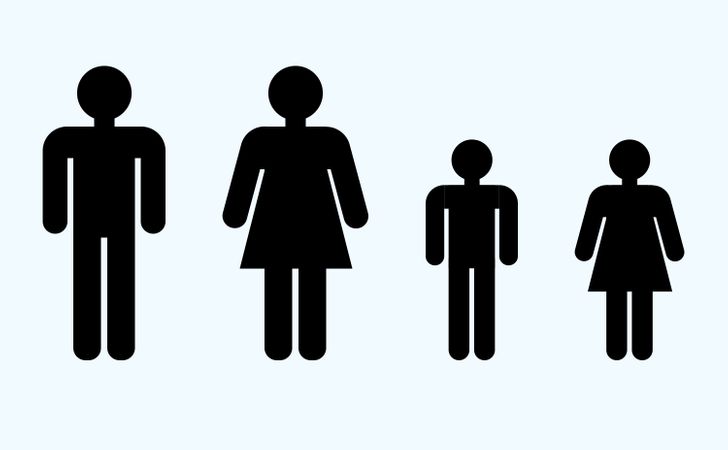
Stores offer snowboards for men and women that can differ by width, stiffness, length, and design. When choosing a snowboard, it’s better to take into account all these parameters.
Don’t buy an adult snowboard for a kid. When the board is larger than it should be, it’s hard to navigate it. It will slow down the progress of the young rider.
Camber profile
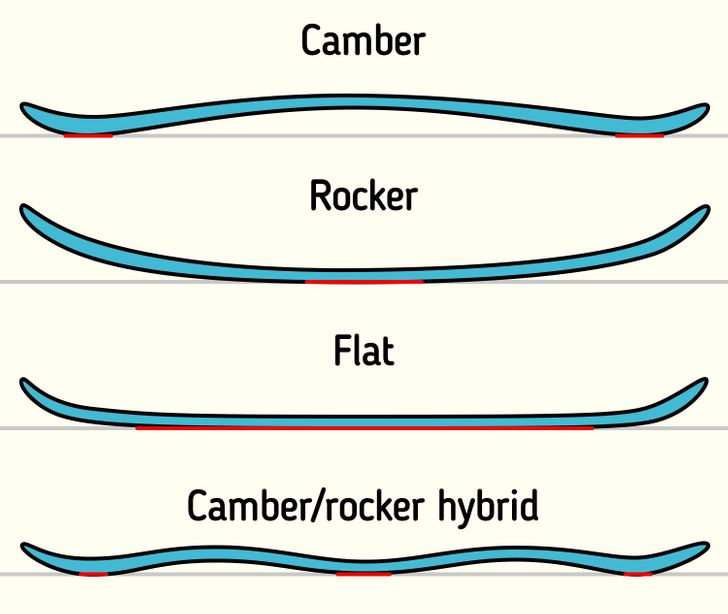
Different snowboards have different shapes. In order to find it out, place the snowboard on a flat surface and look at it from the side.
- A snowboard with a camber profile will have a middle part rising off the floor. It provides a stable ride and responsiveness on hardpack or groomed runs, especially when powering out of turns. This shape is good for boarders who like speed.
- A snowboard with a rocker shape will, on the contrary, have its middle part flat against the floor. This type of snowboard is softer and good both for trails and parks. Such snowboards offer easy turn initiation, which makes them popular among beginners.
- Flat snowboards have a flat middle that allows for quick turns and good sliding.
- When different variants of shapes are combined in one, they’re called hybrids. For example, a camber/rocker provides a good and smooth ride as well as good edge hold for feet.
The flat middle of a flat/rocker provides decent edge hold on hard snow, while rocker tips and tails are responsible for good float in soft snow.
A snowboard’s width
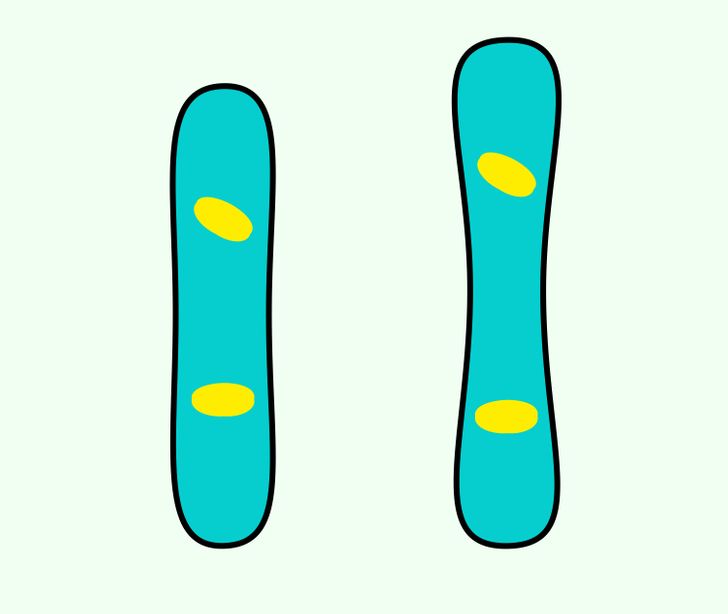
The ideal width is selected based on your snowboard boots — they should hang 0.4-0.8 inches over the edge of the snowboard.
A snowboard’s stiffness
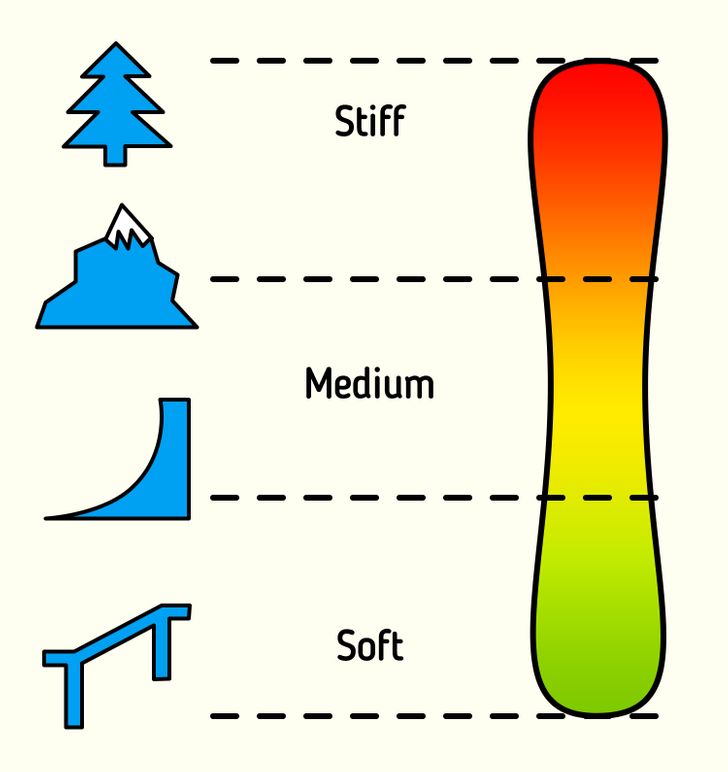
A snowboard can be:
- Soft, as it forgives mistakes, is good for rails in freestyle parks, and is recommended to beginners for better progress.
- Stiff, as it is more responsive, and steadier at high speeds. It’s preferred by those who want to ride as fast as possible and leave a nice trace on the snow (most often, free-riders).
- Medium, as it’s a universal option both for a park and for mountains.
A snowboard’s shape
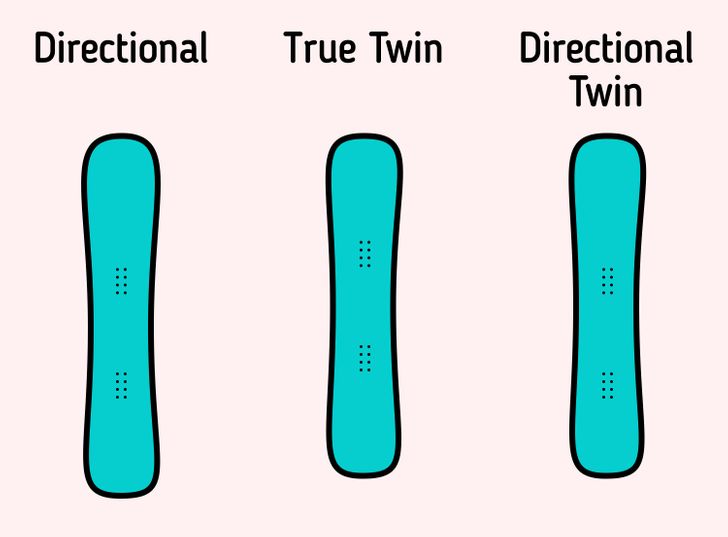
There are 3 shapes of snowboards:
- Directional: The nose is longer than the tail, and they are designed for riding deep snow at high speeds and in one direction. They leave beautiful arched carves.
- True twin: The nose and the tail have the same length, they are symmetrical, and they’re good for all styles of snowboarding.
- Directional twin: It’s something between the first 2 types. They’re directional, though the tail and the nose are close to being symmetrical. They have the advantages of both shapes.
Additional equipment
You’ll also need additional equipment to start snowboarding:
- Bindings
- Snowboard boots and special socks
- A protective mask
- A helmet
- Protection for the knees, back, wrists, and coccyx
- A snowboard outfit (with protection from wind and moisture)
- Gloves
- Thermal base layers